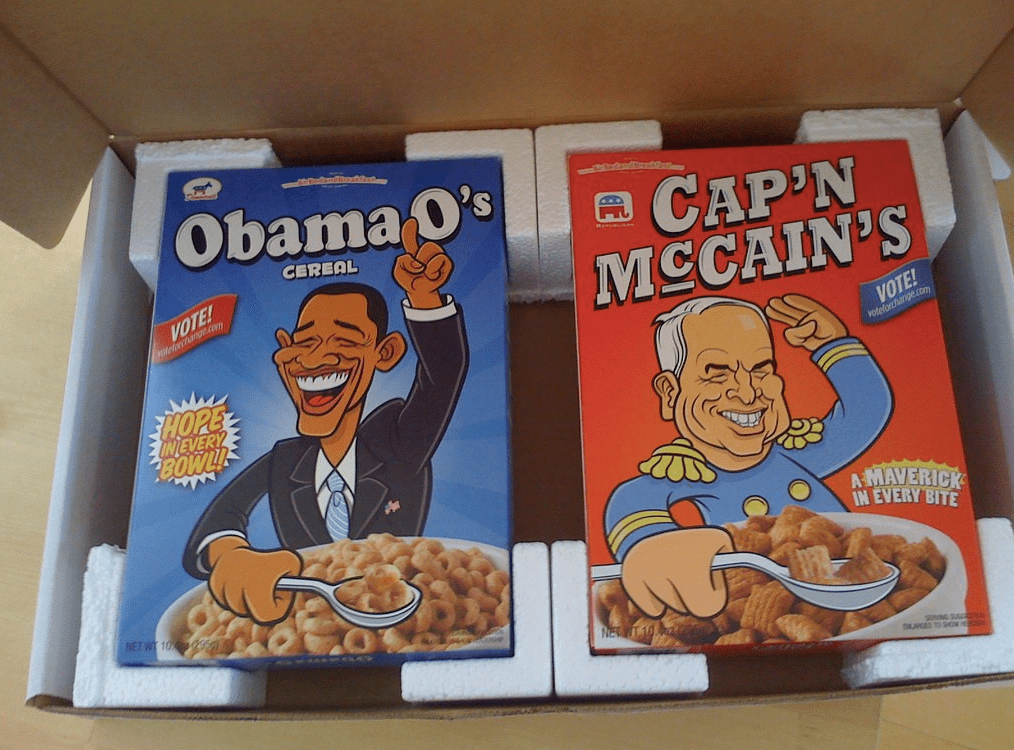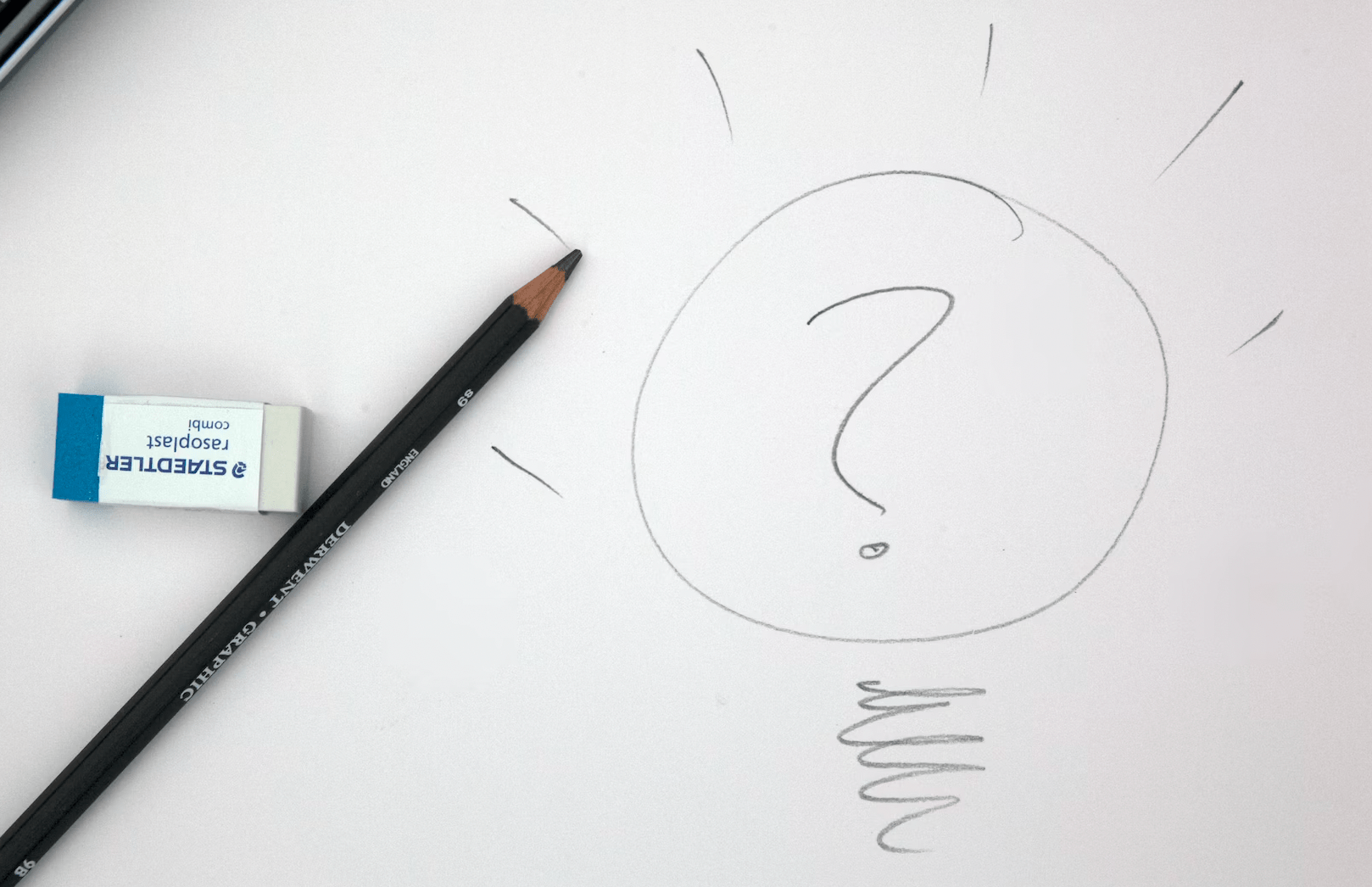Dreaming And Scheming With The Business Model Canvas
The first time you fill in a Business Model Canvas for your idea, you’re trying to capture the essence of the company.
The second time, you’re trying to clarify and improve each of the nine boxes, to create a sharper model.
So now that we have a clear picture of today’s model, what we need is some inspiration for what the model could become in the future.
Some of the best ways to find that inspiration are through design constraints, thought experiments and hypotheticals – twisting and stretching our ideas to see where they break and where they show a surprising amount of potential.
Let’s look at some prompts that might shift your thinking and open up new possibilities
Not every prompt will be a good fit for your work, but your job is to articulate why that might be.
It’s helpful to start a response with “We can if…”, such as:
· We can if we find the right partners…
· We can if we hire a good…
· We can if we could find 200 early adopters…
· We can if we could raise prices by 15%...
· We can if we also added a…
· We can if we paused our work on…
· We can if we reframe ourselves as…
· We can if we subsidise it with…
All of these are designed to create lots of options, angles and ideas, with the best ones going to the testing phase for validation.
You don’t have to commit to anything that isn’t validated, there’s no risk and a lot of upside – but you have to indulge these questions and see where they take you.
Here are 20 good ones to consider:
1. What if we had two brands?
(Customer Segments, Customer Relationships, Value Propositions, Revenue Streams)
It’s hard to be all things to all people, which is why companies sometimes create two brands in similar markets, designed to better serve certain customers.
Qantas and Jetstar, Porsche and Volkswagen, Milwaukee and Ryobi, Expedia and Trivago, Facebook and Instagram, etc.
Each brand can specialise towards a different customer, a different theme, a different price point – making the most of shared systems behind the scenes and becoming more competitive.
It's more work, but it avoids compromise and helps you to better serve a larger audience.
2. What if everything was digital?
(Channels, Customer Relationships, Key Resources)
It’s costly to meet people in-person and it’s costly to ship products across continents, so there are some big advantages for digital-only models.
How might you give customers what they want using their screens and devices? What would you package together?
What alternative formats might make this desirable to your market?
e.g. Audiobooks, e-books, videos, augment reality, virtual reality, apps, podcasts, Zoom calls, WhatsApp groups, email, cloud storage, social media.
How much cheaper would it be for you?
What’s the right price for your customers?
Who else is doing a good job of this model in your field?
3. What if we taught or shared our methodology?
(Key Partners, Value Propositions, Revenue Streams)
Expansion and replication aren’t exactly the same – what if you were able to replicate your work without needing to build a much bigger business?
This might see you teach your approach to others, who then in turn serve a new audience of customers (e.g. interstate or overseas).
It's a good idea for specialists with intellectual property (IP), particularly if their IP been proven to be more effective than the alternatives in the market.
This model requires a diligent recruitment process and a high degree of trust in your future team, along with the right mechanisms for training, supporting and intervening when necessary.
4. What if we had a subscription?
(Value Propositions, Customer Relationships, Revenue Streams)
Does the customer need/want to own something, or do they want flexible use of something?
Subscriptions allow customers to buy small portions or temporary access to a product or service, which they pay for each month/year at a fixed rate.
The business gets the benefit of recurring revenue and a stable number of customers, in exchange for providing ongoing support and delivering new features/content.
This has been popular for streaming services, hampers, software as a service, online gaming, and even professional services like accounting or pet insurance.
Customers don’t have to make a large financial commitment, and can scale their subscription up/down depending on the size of their company/family.
5. What if we used what already existed?
(Cost Structures, Key Partners, Key Resources, Value Propositions)
There is a temptation for entrepreneurs to build a new business around a new innovation or technology that doesn’t yet exist.
They’re waiting for a solution that is perfect, elegant, multi-purpose and that they own.
The catch is, this perfect solution is often expensive or delayed, and your business needs something “good enough” which can be tested right away.
As they say “The future is already here, it’s just unevenly distributed”.
The right innovations might already exist, but in a format that customers don’t see or don’t understand.
What if you used existing products/services with your customers, to see how they go and to learn about what else is required?
This might mean white-labelling another product, assembling a bundle of existing products, utilising a team of established service providers, and then making sales to see what works?
Once you’ve tested these with paying customers, you might want to develop your own tailored offering, but now you have more financial stability and a customer base.
6. What if it was much more exclusive?
(Customer Segments, Revenue Streams, Value Propositions)
Exclusivity isn’t necessarily a weakness, it can become a strength if used well.
Your model/brand is allowed to serve a small number of customers to a very high standard, so long as you’re creating a good reputation amongst your target market.
It might be a form of “True Scarcity”, like being able to work with a maximum of 2-5 customers per day, or only having modest production facilities.
It might also be a form of “Artificial Scarcity”, like setting prohibitively high prices, limiting your production runs, refusing to hire a bigger team, or setting caps on how many customers/stockists you’ll serve in a given area.
You’d think that scarcity would put customers off buying something, but in a lot of cases the opposite is true – we’re drawn to things that are rare or limited, which can often become status symbols.
7. What if we doubled our prices?
(Revenue Streams, Customer Segments, Value Propositions)
Counterintuitively, high prices are sometimes a desirable market signal; suggesting that something is either of top quality or is scarcely available.
Doubling your prices doesn’t automatically mean doubling your costs, that’s up to you.
You might choose to include a lot more, or slightly more, or exactly the same as before, depending on your industry and your margins.
“But we’ll lose customers!” – you probably will, and that’s not always good or bad.
How many would you lose, and how much margin were they bringing you?
Were they good customers for your business?
What if you were able to serve fewer customers AND make more margin than before?
Is that what some of your peers or competitors have done already?
8. What if we aimed to be acquired?
(Channels, Customer Relationships, Key Resources, Key Activities)
If your business is dependent on something it does not own, then that business will be difficult to sell for a high price in the future.
That something it does not own might be you – your skills, your reputation and your time.
If everything requires your involvement or your presence, it will be hard to hand over to a buyer; this feels like a competitive advantage today but is costly in the future.
What if you were to design a version of the business that didn’t require your personal touch, nor require any one person or circumstance?
What would that free you up to do?
The two key features of a business that can be required are systems and assets; these give the owner a big advantage over trying to start a competitor from scratch, and they won’t disappear when you leave.
9. Who would be our nightmare competitor? Can we build their model first?
(Channels, Key Activities, Customer Relationships)
Imagine the worst-case scenario – a new startup appears, and you’re worried that they’re going to steal all of your customers and crush your business.
You’re filled with dread as you see their marketing, their testimonials, their menu of great products and services.
How are you supposed to compete with that?
Now when you pictured that:
What are they selling?
How do they entice and treat their customers?
What assets and partnerships do they have?
Interestingly, a lot of people are good at inventing this fictional competitor, imagining brilliant products and services, exceptional service and raving fans.
What if you built it first?
What’s stopping you?
If you can imagine it and can see why it would be successful, why can’t you start making it?
Why is someone else allowed to build it?
10. What if we were a double-sided market?
(Customer Segments, Key Resources, Channels, Revenue Streams)
A double-sided market refers to a business with two distinct customers, each of whom like or rely on the other.
e.g. newspapers bring together readers and advertisers, Airbnb brings together landlords and holiday makers, job search sites bring together employers and job hunters, etc.
This works particularly well when these two markets don’t naturally find each other or trust each other – we don’t like driving with a stranger, but happily book a nearby Uber.
What does each side of the market need?
What incentives do they respond to?
What are they willing to pay?
Which side is harder to acquire?
What role do they appreciate you playing as a facilitator, aggregator or referee?
This helps us identify new Customer Segments, Value Propositions and Key Activities.
What are you good at doing, and how does that delight each side of the market?
11. What if we created some Obama O’s?
(Revenue Streams, Cost Structures, Value Propositions)
Obama O’s and Cap’n McCain’s were two brands of novelty cereal that were created and sold by Brian Chesky and Joe Gebbia, to help them get out of a financial problem while they built their scrappy startup “Air Bed and Breakfast”.
At this point, their startup was based on the air mattress and Pop-Tarts they offered their house guests, and they saw huge potential to roll the concept out across an expensive city like San Francisco.
But they were also $40,000 in debt.
With the 2008 US election on the front of everyone’s minds, the founders launched the two cereal brands and sold them for $40 a box, generating a quick $30,000 in cereal income while the business took shape.
Interestingly, it was the cereal story and not the pitch that convinced Y-Combinator to accept Brian and Joe into the exclusive program.
Would you benefit from something similar – a product or service that generated immediate cash?
What are you good at making that has a high margin, even if it’s not your ideal/impactful offering?
12. What are our customers asking us to build?
(Customer Segments, Customer Relationships, Cost Structure, Revenue Streams)
Mark Ritson said “The first rule of marketing is that you are not the market”.
We’re making guesses about what customers want, and don’t always listen out for what they are requesting.
If everything on your menu disappeared, what would customers ask you to create for them?
What format would they like?
What are they willing/able to pay?
What are they typing into Google before they’ve heard of you?
If your brand disappeared, where would they shop instead and what would end up in their basket?
Can you create these offers and see how they sell?
13. What if we did drastically less?
(Key Activities, Value Propositions)
The 80/20 rule says that 80% of results come from 20% of the work, and the other 20% comes from the remaining 80% of the work.
e.g. 80% of the commission money goes to 20% of the salespeople, 80% of headaches come from 20% of the customers, 20% of your meetings create 80% of your new orders.
This presents an opportunity – could you strip the work back to the 20% that yields 80% of the benefits?
Could you exclusively serve the 20% of the market that makes up 80% of your best customers?
What else would that free you up to do?
There might be other parts of the work where you feel it’s worth doing the other 80% of the effort to get the incrementally better result too.
Which parts are worth the extra energy?
14. What if we were paid before we spent money?
(Cost Structures, Revenue Streams, Customer Relationships)
A lot of industries require the business owner to take a financial risk – buying stock long before it gets purchased by a customer.
If you’re paying a supplier who then makes something, you might not see it for months, then you store it and sell it, then the customer takes it from you and pays you 60 days later.
That means you could have 4-6 months where you’ve paid for something and haven’t yet been paid back; a huge risk for your company.
This has prompted many businesses to seek out new arrangements where they can be paid by the customers BEFORE spending any money themselves.
They no longer take risks, they only place orders once they’ve received at least some money, even a deposit or a pre-sale.
You see it with crowdfunding, drop shipping, print-on-demand, requesting half of the payment upfront, all mechanisms to insulate you from a big financial risk.
Well, technically the risk is passed to the customer, who needs to be excited to make a purchase in advance.
This might be because they want to secure their place in line, or because they receive a discount or special bonus for pre-ordering.
Is this already starting to happen in your industry?
What mechanisms can you borrow from other industries?
If certain customers refuse to share the financial risk with you, are they good customers for your next season of growth?
15. What if we made money in our sleep?
(Key Resources, Key Activities, Revenue Streams)
Michael Caine once told his friend Vidal Sassoon the secret to wealth:
“It’s simple. You must have something that is working for you while you are asleep. For instance, successful musicians have got it made, their records or music are being played all the time, every day, somewhere in the world.
No matter what they are doing, they are still making money.
You are a great hairdresser, but you can only charge so much for a hair-do and you can only stand on your feet for so long so there is a ceiling on the amount of money that you can make.
So, you’ve got to make shampoos and other products that work for you while you are asleep”
That’s some brilliant advice.
What’s your way of making money while you sleep?
Could it come from a digital product or an asynchronous program (people do the work in their own time)?
Could it come from great assets that don’t require your time and energy to serve customers?
Could it come from Key Partners using your products and materials in exchange for a royalty or fee?
Vidal certainly took note, launching his own academy, line of hair products and tools like brushes and hair dryers, becoming a household name across the world.
16. What if we were hunting Antelope?
(Customer Segments, Key Activities, Customer Relationships, Channels)
The book Tools Of Titans features a wonderful analogy from Newt Gingrich:
A lion is fully capable of capturing, killing, and eating a field mouse.
But it turns out that the energy required to do so exceeds the caloric content of the mouse itself. So a lion that spent its day hunting and eating field mice would slowly starve to death.
A lion can’t live on field mice. A lion needs antelope. Antelope are big animals.
They take more speed and strength to capture and kill, and once killed, they provide a feast for the lion and her pride. A lion can live a long and happy life on a diet of antelope.
The distinction is important. Are you spending all your time and exhausting all your energy catching field mice? In the short term it might give you a nice, rewarding feeling. But in the long run you’re going to die.
So ask yourself at the end of the day, “Did I spend today chasing mice or hunting antelope?”
For a lot of business models, these Antelope usually sit in your Customer Segments or Key Partners boxes.
The way in which you approach them might be different, as will the Value Propositions you highlight, and you might even change your bundles and pricing.
What would it look like to seek them out?
What changes in your Channels and Customer Relationships?
How much more work might it take?
How would it affect the rest of the business if you caught a few Antelope?
17. What if we were serving our dream customers?
(Customer Segments, Channels)
When a business first starts, you’re probably grateful to have any customers at all, especially when you have spare capacity.
Over time though, the wrong customers take up your attention but might not bring you a lot of joy, a lot of credibility or a lot of margin.
Who would be your dream customers?
Who would you be proud to work with?
What would that mean for you and for your business?
They might not even be bigger customers like the Antelope, it might be that they are well connected or involved in projects you appreciate.
Where are these customers shopping today?
What would help them overcome the switching costs to try your brand?
18. What if we built the version we are capable of making today?
(Key Resources, Key Activities, Key Partners)
There is often an uncomfortable disconnect between what you can envisage in your mind, and what you can realistically create today.
You might be able to imagine masterpieces, but haven’t yet mastered your craft, and this misalignment leads a lot of people to quit out of frustration.
Perfectionism is the mindset that says “If I can’t make a perfect one, I won’t make anything”, and while that might sound noble in the moment, it essentially ends your project.
This question gives you permission to create your best work, even if it’s not the best work, and to start selling something even if it’s not flawless.
19. What if we make something great for the sake of making something great?
(Value Propositions, Key Activities)
Not everything needs a business case.
What would be great to make for its own sake?
A product that would genuinely serve someone well, even if it makes no margin?
An event that would be popular but not yet lucrative?
Creating a community gathering point?
Writing excellent recommendations for your market?
Acts of generosity don’t need to have a financial justification, and you won’t know what they lead to.
20. What if we moved our paywall?
(Channels, Customer Relationships, Revenue Streams, Cost Structures)
A paywall is the barrier between what someone can access for free, and what they can access by becoming a paying customer.
There are no “right” ways of doing this, and many businesses have found great success by moving this paywall further forward or further back.
e.g. some news sites are free with ads, some have a paywall for certain content, some have a monthly free limit.
Spotify has a paywall that allows you to use their service for free but with ads and deliberately annoying features, to push you into a premium subscription.
Mailchimp is free for new users, then requires payment for larger email campaigns and pro features.
Moving the paywall further back encourages more customers to experience your offers before they need to make a decision, which can show your strengths.
Moving the paywall further forward shrinks your audience, but ensures that anyone using your work has paid something.
Moving the paywall to cover certain features lets new users get comfortable with your basic offering, then nudges them to upgrade when they’re ready to use those features.
The point of those questions is to help you think of a new angle for your business – a different market, a different position, a different way of working – and now your job is to draft a new model.
What’s the “Can If…” for the prompt?
What would need to happen for this to be a good idea?
What changes?
What stays the same?
What do your responses show you about your work and your unwritten rules?
Pick a few questions, sketch a few models, step back and see which ones you like.
It costs you nothing, and it might be the start of a lucrative new iteration of your business.








